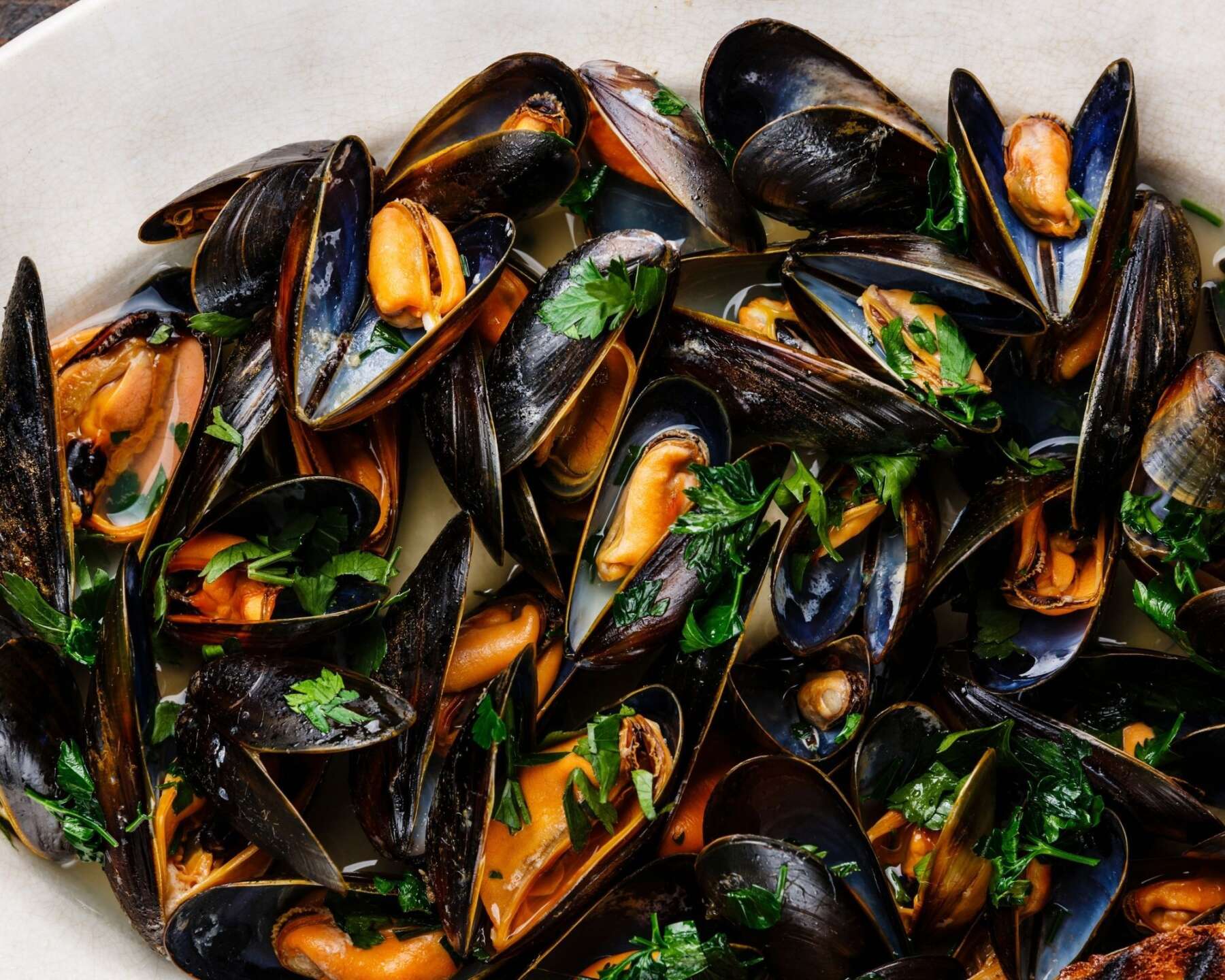
The Marvels of Mussels
There are two classifications of shellfish; crustaceans and molluscs and mussels fall into the latter category.
Molluscs, in the main, are soft bodied shellfish contained in a single or double shell (bivalve). The most abundant and versatile of the Irish shellfish is the Blue Mussel, also known as the common mussel.
Mussels are easy to find along the coastline and are often found in the impact zone, where waves crash against the rocks. They also live in the sand and gravel bottom of streams and rivers. However, since 1970, mussel farms have been the main source of mussels for the commercial market. Farmed mussels are grown on ropes that are attached to poles drilled into the floor of the bay or ocean. The ropes hang down into the ocean allowing the mussels to grow along them and they are harvested by hand or machine.
Mussels are available all year round. Mussels which are chipped, broken or have damaged shells should be avoided. Fresh mussels are usually tightly closed and if slightly open, they will close when tapped or squeezed. This means that the mussel is alive, mussels which do not close should be discarded as they are unsafe to eat.
Fresh mussels can be stored for up to 24 hours if covered with a damp cloth and kept in a cool place, however they are best used at their freshest, cooked and consumed as soon as possible.
Mussels are a good source of protein and a great source of omega-3 fatty acids, zinc and folate. They exceed the recommended daily intake of selenium, iodine and iron.
The best way to cook mussels is to steam them, in a little water or white wine. They are usually enjoyed cooked in this simple fashion, however once steamed and opened they can be further cooked by frying, grilling or baking.










